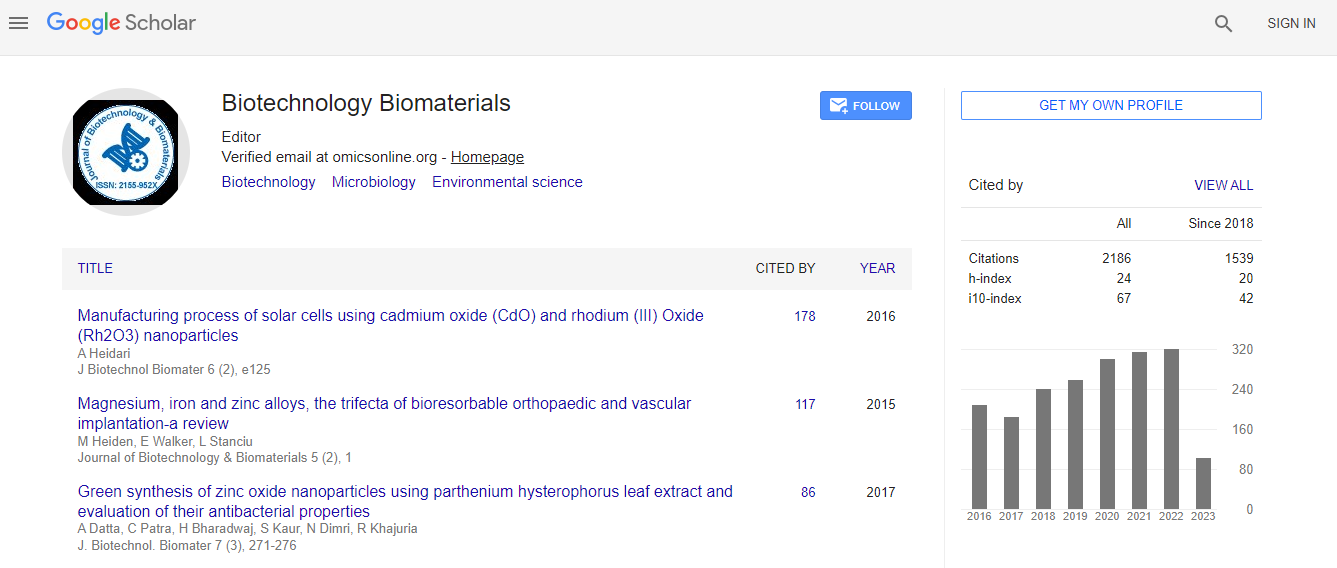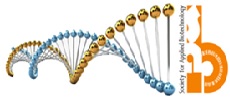Our Group organises 3000+ Global Conferenceseries Events every year across USA, Europe & Asia with support from 1000 more scientific Societies and Publishes 700+ Open Access Journals which contains over 50000 eminent personalities, reputed scientists as editorial board members.
Open Access Journals gaining more Readers and Citations
700 Journals and 15,000,000 Readers Each Journal is getting 25,000+ Readers
Google Scholar citation report
Citations : 3330
Journal of Biotechnology & Biomaterials received 3330 citations as per Google Scholar report
Indexed In
- Index Copernicus
- Google Scholar
- Sherpa Romeo
- Open J Gate
- Genamics JournalSeek
- Academic Keys
- ResearchBible
- China National Knowledge Infrastructure (CNKI)
- Access to Global Online Research in Agriculture (AGORA)
- Electronic Journals Library
- RefSeek
- Hamdard University
- EBSCO A-Z
- OCLC- WorldCat
- SWB online catalog
- Virtual Library of Biology (vifabio)
- Publons
- Geneva Foundation for Medical Education and Research
- Euro Pub
- ICMJE
Useful Links
Recommended Journals
Related Subjects
Share This Page
Identification of QTLs for morpho-physiological traits in WL711/C306 wheat RIL population under water deficit stress environments
6th World Congress on Biotechnology
Kalpana Singh, Neeta Dwivedi and Renu-Khanna Chopra
Indian Agricultural Research Institute, India
Posters-Accepted Abstracts: J Biotechnol Biomater
Abstract
Drought is by far the most important environmental stress in agriculture and many efforts have been made to improve crop productivity under water-limiting conditions. A population of 206 recombinant inbred lines (RILs) derived from WL711/C306 was phenotyped for flag leaf area (FLA), plant habit (PHBT) and cell membrane stability (CMS) under WDS and irrigated environment. The RIL population showed considerable variation, normal distribution and transgressive segregation for FLA, PHBT and CMS under WDS. The genetic linkage map of WL711/C306 RIL population was constructed comprising of 346 markers. The total map distance was 4526.8cM with an averaged interval of 12.9cM between adjacent markers. Major consistent QTL for FLA, PHBT and CMS were identified on chromosomes 2DS, 3BS, 4BL and 7AL in the WL711/C306 RIL population under WDS. The Major QTL��?s qFLAWD.2D.1 and qCMSWD.3B.1 were located on chromosome 2DS and 3BS respectively with positive allele being contributed by C306, a drought resistant parent accounting for a large proportion of phenotypic variance. Two candidate genes Ghd7 for grain yield and heading date and OsCDK4 for calcium dependent protein kinases were identified in the 2DS and 3BS QTL regions on comparison with gene content of rice chromosomes 7 and 1 respectively. Hence, after validation, markers associated with QTLs qFLAWD.2D.1 and qCMSWD.3B.1 may be used by wheat breeders in the marker assisted breeding for flag leaf area and maintain cell membrane integrity for contributing grain yield in wheat.Biography
Email: kalpanaschauhan@yahoo.co.in

 Spanish
Spanish  Chinese
Chinese  Russian
Russian  German
German  French
French  Japanese
Japanese  Portuguese
Portuguese  Hindi
Hindi 
